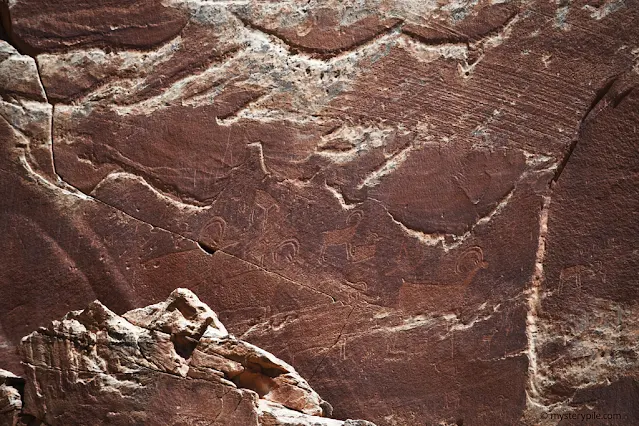Travelling southwest along highway UT-24 in Utah's southern desert, the terrain transforms from wide open prickly pear cactus and sage brush-covered plains to a narrow path winding through picturesque domineering red rock cliffs. The highway meets up and follows along twists and turns of the Freemont River, which helped erode the surrounding rock formations, creating a naturally fertile refuge with plenty of resources to sustain life for hundreds of years.
Geology in every direction gives an unmistakable impression of an aged landscape, one that is seemingly inhospitable, but full of hope and longevity. Possibly this is what the People of Long Ago, or the Hisatsinom, may have felt when they first migrated to the area thousands of years before European settlers discovered the hidden desert oasis.
As great ancestors of the Hopi Tribe, the Hisatsinom people learned how to efficiently maximize offerings of the Freemont River. They transformed and cultivated an unforgiving terrain in balance with nature and prospered; Hisatsinom inhabited Capitol Reef when three tribes, the Hopi, Zuni, and Paiute worked together from around 300 to 1,300 C.E. to mutually benefit from the land's resources and natural protection.
The modern curvy road runs right through the heart of the former Hisatsinom habitat, which is now protected within Capitol Reef National Park and preserved for future generations to enjoy. A plain brown sign with white lettering, the word Petroglyphs and an arrow pointing toward a rockface, appears at one point along the highway. Though the sign seems rather humble in its presence, it marks a significant historical location with evidence of the Hisatsinom settlement in the form of petroglyphs.
Carvings in the rocks depict elements of spiritual belief, flora and fauna, family history, and events which could be considered in whole as an ancient library of everyday ancestral life. Several images show various species of animals and herds that could have been used for teaching or evaluating hunting strategies. One way to interpret the carvings might be to envision the rocks as an ancient whiteboard representing real life scenarios encountered.
Additional images contain tribal symbols and are meant to describe cultural beliefs of the Hisatsinom and where they descended from. While these petroglyphs appear to show families in traditional clothing, they also give the impression of otherworldly influence in style. The rounded headdress may actually represent animal horns and feathers rather than helmets used by visitors from space. Body shapes are straight, flat lines, like those in animal pictures and fit with the artistic vision of the ancient people.

Part of the enigma of Capitol Reef is being able to look into a window of the Hopi's past, to a time when multiple tribes chose to work together for survival in an area where nature found a way despite the odds against. Another fascination is how these petroglyphs survived for hundreds and hundreds of years to carry on the traditions of People of Long Ago. If there is anything the Hopi can teach mankind in a modern age, it is to put aside superficial differences in order to sustain our future.





